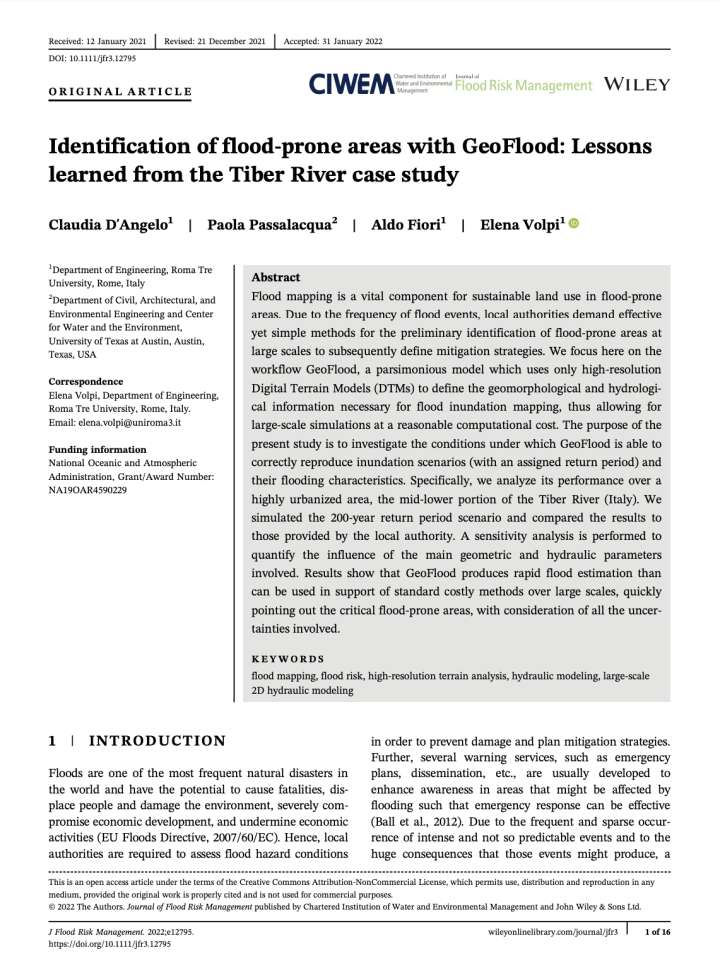Identification of flood-prone areas with GeoFlood: Lessons learned from the Tiber River case study
This paper identifies flood-prone areas with GeoFlood and assesses lessons learned from the Tiber River case study. Flood mapping is a vital component for sustainable land use in flood-prone areas. Due to the frequency of flood events, local authorities demand effective yet simple methods for the preliminary identification of flood-prone areas at large scales to subsequently define mitigation strategies. The study focuses on the workflow GeoFlood, a parsimonious model which uses only high-resolution Digital Terrain Models (DTMs) to define the geomorphological and hydrological information necessary for flood inundation mapping, thus allowing for large-scale simulations at a reasonable computational cost.
The purpose of the present study is to investigate the conditions under which GeoFlood is able to correctly reproduce inundation scenarios (with an assigned return period) and their flooding characteristics. Specifically, the researchers analyze its performance over a highly urbanized area, the mid-lower portion of the Tiber River (Italy). The research simulated the 200-year return period scenario and compared the results to those provided by the local authority. A sensitivity analysis is performed to quantify the influence of the main geometric and hydraulic parameters involved. Results show that GeoFlood produces rapid flood estimation than can be used in support of standard costly methods over large scales, quickly pointing out the critical flood-prone areas, with consideration of all the uncertainties involved.
Explore further
